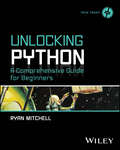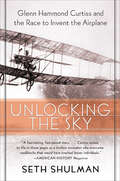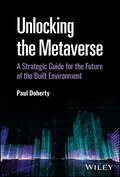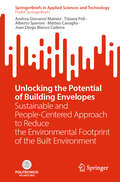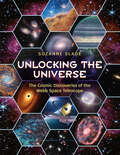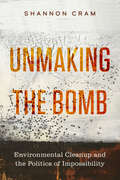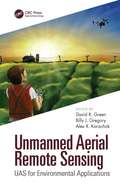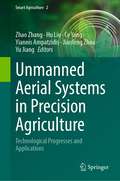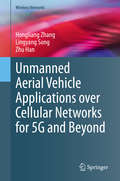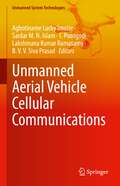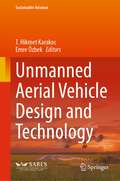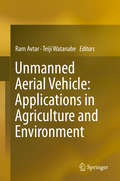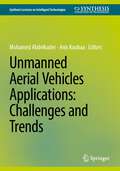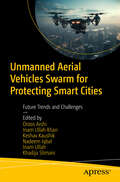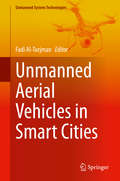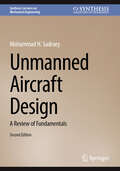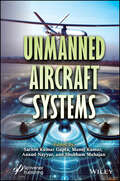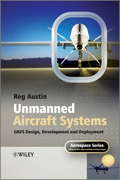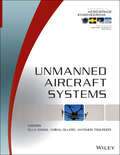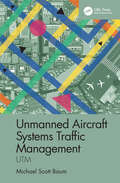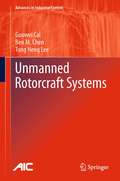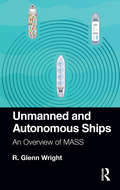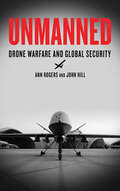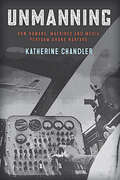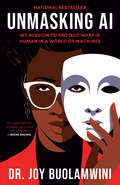- Table View
- List View
Unlocking Python: A Comprehensive Guide for Beginners
by Ryan MitchellA fun and practical guide to learning Python with a special focus on data science, web scraping, and web applications In Unlocking Python: A Comprehensive Guide for Beginners, veteran software engineer, educator, and author Ryan Mitchell delivers an intuitive, engaging, and practical roadmap to Python programming. The author walks you through the vocabulary, tools, foundational knowledge, and occasional pop-culture references you'll need to hone your skills with this popular programming language. You'll learn how to install and run Python on your own machine, get up and coding with the language quickly, and best practices for programming both independently and in the workplace. You'll also find: Key concepts in computer and data science explained from the ground up Advanced Python topics such as logging, unit testing, multiprocessing, and interacting with databases. Introductions to some of Python's most popular third-party libraries: Flask, Django, Scrapy, Scikit-Learn, Numpy, and Pandas Amusing anecdotes from the trenches of industry Perfect for tech-savvy professionals at any stage of their careers who are interested in diving into Python programming. Unlocking Python is also a must-read for readers who work in a technical role but are interested in getting more directly involved with programming, as well as non-Python programmers who want to apply their technical skill to a new language.
Unlocking The Sky: Glenn Hammond Curtiss and the Race to Invent the Airplane
by Seth ShulmanUnlocking the Sky tells the extraordinary tale of the race to design, refine, and manufacture a manned flying machine, a race that took place in the air, on the ground, and in the courtrooms of America. While the Wright brothers threw a veil of secrecy over their flying machine, Glenn Hammond Curtiss -- perhaps the greatest aviator and aeronautical inventor of all time -- freely exchanged information with engineers in America and abroad, resulting in his famous airplane, the June Bug, which made the first ever public flight in America. Fiercely jealous, the Wright brothers took to the courts to keep Curtiss and his airplane out of the sky and off the market. Ultimately, however, it was Curtiss's innovations and designs, not the Wright brothers', that served as the model for the modern airplane.
Unlocking the Metaverse: A Strategic Guide for the Future of the Built Environment
by Paul DohertyUnlocking the Metaverse Highly comprehensive resource providing insight into how the “Metaverse,” and digital worlds in general, can be leveraged for business success Unlocking the Metaverse focuses on the strategic implementation of processes and the execution of Metaverse strategies, technologies, and innovations and provides readers with real world tools and strategies to succeed with market demands. The text provides a clear and concise description of what the Metaverse is and what its value means to readers and their companies. A continuous interaction with readers inside the book’s virtual world in the Metaverse provides both structured and unstructured interactions with the highly qualified author and his guests in periodic and ongoing public events, serving as a repository of continuous learning and a sandbox for continuous innovations to be explored, analyzed, and reported. Unlocking the Metaverse covers sample topics such as: Construction documents and drawings, covering building information modeling (BIM), digital twins, virtual worlds, the metaverse, and level of experience/engagement measures Specifications changing role, covering specification manuals, lifecycle, 3D geolocation specs, and 3D search Smart contracts and tokenomics, DLT/blockchain, smart contracts, NFTs/FTs (digital building/digital asset), fractionalized ownership and digital real estate, and CBDCs, stablecoins, and crypto Future outlooks, covering machine learning and artificial intelligence (AI) as a whole, and its probable applications in gaming and robotics Providing authoritative coverage of an important and fast-evolving industry, Unlocking the Metaverse is an essential resource for architects, engineers, and contractors, facility managers and operators, and property owners who want to stay on the cutting edge of new forms of technology and leverage them to increase business success.
Unlocking the Potential of Building Envelopes: Sustainable and People-Centered Approach to Reduce the Environmental Footprint of the Built Environment (SpringerBriefs in Applied Sciences and Technology)
by Juan Diego Blanco Cadena Andrea Giovanni Mainini Tiziana Poli Alberto Speroni Matteo CavagliàThis book delves into the performance-based design approach, highlighting the necessity for bespoke, adaptive, and cognitive building envelopes that promote sustainable and positive behaviours throughout their lifecycle. A key to unlock the building envelope's potential is the integration of advanced digital tools such as building information modelling (BIM) and digital twin technology, which enable accurate simulation and optimization of energy efficiency, decarbonization, and human-centric design aspects. Moreover, the work emphasizes the importance of a user-centred approach in designing interactive and connected building envelopes, thereby fostering sustainable behaviours among occupants. This focus on user engagement and education in optimizing building envelope utilization not only contributes to reducing the environmental impact but also enhances the quality of life, well-being, and health of occupants. In the era of digital and ecological transition, the book serves as an essential guide to design and operate energy-efficient, responsive, and user-friendly building envelopes, paving the way for a future where the built environment is a significant contributor to sustainability and human health.
Unlocking the Universe: The Cosmic Discoveries of the Webb Space Telescope
by Suzanne SladeA stunning STEM feast on NASA's Webb Telescope--the world's most powerful telescope--will marvel future scientists and engineers about space and the universe beyond.Building the James Webb Space Telescope was no easy feat. It started with a big dream and an even bigger team: thousands of engineers and scientists across the country and world. The team solved design challenges, built prototypes, and ran test after test. They experienced frustration, page-turning suspense, and, ultimately, triumph. After decades of work, a rocket catapulted the Webb Telescope into space. With Webb, we can now see farther than we've ever seen before.The first Webb images, released on July 11, 2022, captivated the world. Today the Webb team continues releasing new images and making astonishing discoveries. This is their story, as told by a mechanical engineer and reviewed for accuracy by key members of the Webb team.
Unmaking the Bomb: Environmental Cleanup and the Politics of Impossibility (Critical Environments: Nature, Science, and Politics #14)
by Shannon CramWhat does it mean to reckon with a contaminated world? In Unmaking the Bomb, Shannon Cram considers the complex social politics of this question and the regulatory infrastructures designed to answer it. Blending history, ethnography, and memoir, she investigates remediation efforts at the Hanford Nuclear Reservation, a former weapons complex in Washington State. Home to the majority of the nation's high-level nuclear waste and its largest environmental cleanup, Hanford is tasked with managing toxic materials that will long outlast the United States and its institutional capacities. Cram examines the embodied uncertainties and structural impossibilities integral to that endeavor. In particular, this lyrical book engages in a kind of narrative contamination, toggling back and forth between cleanup's administrative frames and the stories that overspill them. It spends time with the statistical people that inhabit cleanup's metrics and models and the nonstatistical people that live with their effects. And, in the process, it explores the uneven social relations that make toxicity a normative condition.
Unmanned Aerial Remote Sensing: UAS for Environmental Applications
by David R. Green Billy J. Gregory Alex R. KarachokUnmanned Aircraft Systems (UAS) are a rapidly evolving technology with an expanding array of diverse applications. In response to the continuing evolution of this technology, this book discusses unmanned aerial vehicles (UAVs) and similar systems, platforms and sensors, as well as exploring some of their environmental applications. It explains how they can be used for mapping, monitoring, and modeling a wide variety of different environmental aspects, and at the same time addresses some of the current constraints placed on realizing the potential use of the technology such as s flight duration and distance, safety, and the invasion of privacy etc. Features of the book: Provides necessary theoretical foundations for pertinent subject matter areas Introduces the role and value of UAVs for geographical data acquisition, and the ways to acquire and process the data Provides a synthesis of ongoing research and a focus on the use of technology for small-scale image and spatial data acquisition in an environmental context Written by experts of the technology who bring together UAS tools and resources for the environmental specialist Unmanned Aerial Remote Sensing: UAS for Environmental Applications is an excellent resource for any practitioner utilizing remote sensing and other geospatial technologies for environmental applications, such as conservation, research, and planning. Students and academics in information science, environment and natural resources, geosciences, and geography, will likewise find this comprehensive book a useful and informative resource.
Unmanned Aerial Systems in Precision Agriculture: Technological Progresses and Applications (Smart Agriculture #2)
by Hu Liu Zhao Zhang Yu Jiang Jianfeng Zhou Yiannis Ampatzidis Ce YangThis book, consisting of 8 chapters, describes the state-of-the-art technological progress and applications of unmanned aerial vehicles (UAVs) in precision agriculture. It focuses on the UAV application in agriculture, such as crop disease detection, mid-season yield estimation, crop nutrient status, and high-throughput phenotyping. Different from individual papers focusing on a specific application, this book provides a holistic view for readers with a wide range of subjects. In addition to researchers in the areas of plant science, plant pathology, breeding, engineering, it is also intended for undergraduates and graduates who are interested in imaging processing, artificial intelligence in agriculture, precision agriculture, agricultural automation, and robotics.
Unmanned Aerial Vehicle Applications over Cellular Networks for 5G and Beyond (Wireless Networks)
by Zhu Han Lingyang Song Hongliang ZhangThis book discusses how to plan the time-variant placements of the UAVs served as base station (BS)/relay, which is very challenging due to the complicated 3D propagation environments, as well as many other practical constraints such as power and flying speed. Spectrum sharing with existing cellular networks is also investigated in this book. The emerging unmanned aerial vehicles (UAVs) have been playing an increasing role in the military, public, and civil applications. To seamlessly integrate UAVs into future cellular networks, this book will cover two main scenarios of UAV applications as follows. The first type of applications can be referred to as UAV Assisted Cellular Communications.Second type of application is to exploit UAVs for sensing purposes, such as smart agriculture, security monitoring, and traffic surveillance. Due to the limited computation capability of UAVs, the real-time sensory data needs to be transmitted to the BS for real-time data processing. The cellular networks are necessarily committed to support the data transmission for UAVs, which the authors refer to as Cellular assisted UAV Sensing. To support real-time sensing streaming, the authors design joint sensing and communication protocols, develop novel beamforming and estimation algorithms, and study efficient distributed resource optimization methods.This book targets signal processing engineers, computer and information scientists, applied mathematicians and statisticians, as well as systems engineers to carve out the role that analytical and experimental engineering has to play in UAV research and development. Undergraduate students, industry managers, government research agency workers and general readers interested in the fields of communications and networks will also want to read this book.
Unmanned Aerial Vehicle Cellular Communications (Unmanned System Technologies)
by Sardar M. N. Islam T. Poongodi Agbotiname Lucky Imoize Lakshmana Kumar Ramasamy B. V. V. Siva PrasadThe book discusses how Unmanned Aerial Vehicles (UAVs) can leverage the sub-6 GHz massive MIMO to address cell selection and interference issues in future wireless networks. The book takes a close look at utilizing UAVs to achieving direct and efficient device-to device (D2D) communications in the sky. Also, the key 6G enablers (cell-free architectures, artificial intelligence, reconfigurable intelligent surfaces, THz communications, and non-terrestrial networks) for UAV communication are broached, and the primary technological challenges of each enabler are discussed extensively. Furthermore, the book covers the design of adaptable UAVs to operate in diverse and harsh environmental conditions. Additionally, the existing UAVs’ networking protocols and how these can be greatly enhanced to address the issue of intermittent network changes and channel impairments are discussed. The prospects and societal benefits envisioned in future UAVs are also presented.
Unmanned Aerial Vehicle Design and Technology (Sustainable Aviation)
by T. Hikmet Karakoc Emre ÖzbekUnmanned Aerial Vehicle Design and Technology provides readers with a comprehensive introduction to unmanned aerial systems (UAS) technology basics. The book presents clear, concise guidance on UAS system design, components, control, and operations fundamentals. Additional chapters look at unmanned aerial regulations and ethics and the historical background of UAS technology. This textbook offers a well-rounded look at unmanned flight technology, making it an ideal primer for aviation and aerospace students and anyone interested in learning more about unmanned aerial systems, including engineers, technicians, drone and flight hobbyists, and civil aviation organization officials.
Unmanned Aerial Vehicle: Applications in Agriculture and Environment
by Teiji Watanabe Ram AvtarThis book showcases how new and emerging technologies like Unmanned Aerial Vehicles (UAVs) are trying to provide solutions to unresolved socio-economic and environmental problems. Unmanned vehicles can be classified into five different types according to their operation. These five types are unmanned ground vehicles, unmanned aerial vehicles, unmanned surface vehicles (operating on the surface of the water), unmanned underwater vehicles, and unmanned spacecraft. Unmanned vehicles can be guided remotely or function as autonomous vehicles. The technology has a wide range of uses including agriculture, industry, transport, communication, surveillance and environment applications. UAVs are widely used in precision agriculture; from monitoring the crops to crop damage assessment. This book explains the different methods in which they are used, providing step-by-step image processing and sample data. It also discusses how smart UAVs will provide unique opportunities for manufacturers to utilise new technological trends to overcome the current challenges of UAV applications. The book will be of great interest to researchers engaged in forest carbon measurement, road patrolling, plantation monitoring, crop yield estimation, crop damage assessment, terrain modelling, fertilizer control, and pest control.
Unmanned Aerial Vehicles Applications: Challenges and Trends (Synthesis Lectures on Intelligent Technologies)
by Anis Koubaa Mohamed AbdelkaderThis is a book that covers different aspects of UAV technology, including design and development, applications, security and communication, and legal and regulatory challenges. The book is divided into 13 chapters, grouped into four parts. The first part discusses the design and development of UAVs, including ROS customization, structured designs, and intelligent trajectory tracking. The second part explores diverse applications such as search and rescue, monitoring distributed parameter systems, and leveraging drone technology in accounting. The third part focuses on security and communication challenges, including security concerns, multi-UAV systems, and communications security. The final part delves into the legal and regulatory challenges of integrating UAVs into non-segregated airspace. The book serves as a valuable resource for researchers, practitioners, and students in the field of unmanned aerial vehicles, providing a comprehensive understanding of UAV technology and its applications.
Unmanned Aerial Vehicles Swarm for Protecting Smart Cities: Future Trends and Challenges
by Keshav Kaushik Inam Ullah Khan Inam Ullah Oroos Arshi Nadeem Iqbal Khadija SlimaniExplore the intersection between unmanned aerial vehicles (UAVs) and the evolving landscape of smart cities. With the increasing integration of technology into urban environments, there is a growing need to understand how UAV swarms can contribute to the safety, efficiency, and resilience of these complex urban ecosystems. The book aims to provide a technical understanding of UAV swarms and their applications within the context of smart cities. It begins by laying the groundwork with an introduction to UAV swarms and smart cities, establishing the foundational concepts and motivations behind their integration. As the book progresses, it delves into various aspects of smart cities, exploring concepts, technologies, and challenges inherent in their development and operation. This includes discussions on cloud computing, cybersecurity, machine learning applications, surveillance and monitoring systems, urban planning, and infrastructure management. It also examines the integration of IoT devices with UAV swarms, highlighting the synergies between these emerging technologies and their potential impact on urban environments. The book examines cutting-edge topics such as edge computing, blockchain applications, 5G integration, and augmented reality/virtual reality (AR/VR) visualization techniques in the context of UAV swarm operations. It concludes with reflections on innovations and future directions, offering insights into the evolving landscape of UAV swarm technologies and their implications for the protection and advancement of smart cities. The book serves as a comprehensive guide for researchers, practitioners, and policymakers interested in understanding the technical, social, and economic dimensions of UAV swarm technology within the context of smart city development and management. What You Will Learn Identify practical applications of UAV swarms in surveillance monitoring, urban planning, disaster management, and infrastructure resilience Gain comprehensive understanding of UAV swarms by exploring diverse disciplines Apply insights from emerging technologies like cloud computing, machine learning, blockchain, IoT devices, and so on to UAV swarm technology Who Is This Book For This book appeals to a wide range of readers with different interests and backgrounds, including researchers, policymakers, industry stakeholders, practitioners, experts, and general fans who are curious in the confluence of smart cities with UAV swarm technologies with little to no experience or knowledge of UAV swarms.
Unmanned Aerial Vehicles in Smart Cities (Unmanned System Technologies)
by Fadi Al-TurjmanThis book addresses the major challenges in realizing unmanned aerial vehicles (UAVs) in IoT-based Smart Cities. The challenges tackled vary from cost and energy efficiency to availability and service quality. The aim of this book is to focus on both the design and implementation aspects of the UAV-based approaches in IoT-enabled smart cities’ applications that are enabled and supported by wireless sensor networks, 5G, and beyond. The contributors mainly focus on data delivery approaches and their performability aspects. This book is meant for readers of varying disciplines who are interested in implementing the smart planet/environments vision via wireless/wired enabling technologies.Involves the most up to date unmanned aerial vehicles (UAV) assessment and evaluation approachesIncludes innovative operational ideas in agriculture, surveillance, rescue, etc.Pertains researchers, scientists, engineers and practitioners in the field of smart cities, IoT, and communicationsFadi Al-Turjman received his Ph.D. from Queen’s University, Canada. He is a full professor and a research center director at Near East University, Nicosia. He is a leading authority in the area of IoT and intelligent systems. His publication history spans over 250 publications in addition to his editorialship in top journals such as the IEEE Communication Surveys and Tutorials, and the Elsevier Sustaibable Cities and Society.
Unmanned Aircraft Design: A Review of Fundamentals (Synthesis Lectures on Mechanical Engineering)
by Mohammad H. SadraeyThis book provides fundamental principles, design procedures, and design tools for unmanned aerial vehicles (UAVs) with three sections focusing on vehicle design, autopilot design, and ground system design. The design of manned aircraft and the design of UAVs have some similarities and some differences. They include the design process, constraints (e.g., g-load, pressurization), and UAV main components (autopilot, ground station, communications system, sensors, and payload). A UAV designer must be aware of the latest UAV developments; current technologies; know lessons learned from past failures; and they should appreciate the breadth of UAV design options. The contribution of unmanned aircraft continues to expand every day and over 67 countries are developing and employing UAVs for both military and civil/scientific purposes. A UAV system is much more than a reusable air vehicle or vehicles. UAVs are air vehicles, they fly like airplanes and operate in an airplane environment. They are designed like air vehicles; they have to meet critical air vehicle requirements. A designer needs to know how to integrate complex, multi-disciplinary systems, and to understand the environment, the requirements and the design challenges and this book is an excellent overview of the fundamentals from an engineering perspective. This book is meant to meet the needs of newcomers into the world of UAVs. The materials are intended to provide enough information in each area and illustrate how they all play together to support the design of a complete UAV. Therefore, this book can be used both as a reference for engineers entering the field or as a supplementary text for a UAV design course to provide system-level context for each specialized topic. The second edition is extensively revised. Some of the new terminologies, concepts, and specific unmanned aircraft systems are introduced. The revisions make the book clearer and easier to understand, and will add number of new subjects in areas that have become more prominent in the unmanned aviation world.
Unmanned Aircraft Systems
by Manoj Kumar Anand Nayyar Sachin Kumar Gupta Shubham MahajanThis book is an essential resource for anyone looking to understand the cutting-edge applications and evolving technologies of Unmanned Aerial Systems, showcasing how they enhance safety and efficiency in monitoring, emergency response, and smart city development. With the evolution of Unmanned Aircraft Systems (UAS), its applications can be observed in the fields of monitoring for fire detection, sustainable computing, emergencies, and law enforcement. They can be useful for monitoring or screening applications, as well as the deployment of smart cities, security monitoring, and communication establishments at rare locations or unapproachable locations. Thus, the wireless ad-hoc networks of Unmanned Aerial Vehicles (UAVs) and infrastructure-based UAVs can be utilized in this proposal. Unmanned aircraft systems (UAS) extend human potential and allow us to execute dangerous or difficult tasks safely and efficiently, saving time, money, and, most importantly, lives. UAS can help police, fire, and other public workers save lives in emergencies like natural disasters, locate missing animals and children, or help fight fighters. Unmanned Aircraft Systems contains novel contributions and emerging trends in the area of Unmanned Aerial Vehicles (UAV), drones, and aircraft without a human pilot aboard. It has three segments incorporating technological advancements and future trends in UAS, the policies and security aspects of UAVs, and their applications as an intelligent system. Along with these state-of-the-art techniques, this book also incorporates advances in AI and machine learning, deep learning, IoT technology, cybersecurity and Blockchain, UAV regulation policies in the United States and Europe, SOTA in ITS, and many more technological advancements, which makes this book the pioneer and benchmarking reference in these areas.
Unmanned Aircraft Systems
by Reg AustinUnmanned Aircraft Systems delivers a much needed introduction to UAV System technology, taking an integrated approach that avoids compartmentalising the subject. Arranged in four sections, parts 1-3 examine the way in which various engineering disciplines affect the design, development and deployment of UAS. The fourth section assesses the future challenges and opportunities of UAS.Technological innovation and increasingly diverse applications are two key drivers of the rapid expansion of UAS technology. The global defence budget for UAS procurement is expanding, and in the future the market for civilian UAVs is expected to outmatch that of the military. Agriculture, meteorology, conservation and border control are just a few of the diverse areas in which UAVs are making a significant impact; the author addresses all of these applications, looking at the roles and technology behind both fixed wing and rotorcraft UAVs.Leading aeronautical consultant Reg Austin co-founded the Bristol International Remotely Piloted Vehicle (RPV) conferences in 1979, which are now the longest-established UAS conferences worldwide. In addition, Austin has over 40 years' experience in the design and development of UAS. One of Austin's programmes, the "Sprite UAV System" has been deployed around the world and operated by day and night, in all weathers.
Unmanned Aircraft Systems
by Wei Shyy Richard BlockleyCovering the design, development, operation and mission profiles of unmanned aircraft systems, this single, comprehensive volume forms a complete, stand-alone reference on the topic. The volume integrates with the online Wiley Encyclopedia of Aerospace Engineering, providing many new and updated articles for existing subscribers to that work.
Unmanned Aircraft Systems Traffic Management: UTM
by Michael S. BaumThis book introduces unmanned aircraft systems traffic management (UTM) and how this new paradigm in traffic management integrates unmanned aircraft operations into national airspace systems. Exploring how UTM is expected to operate, including possible architectures for UTM implementations, and UTM services, including flight planning, strategic coordination, and conformance monitoring, Unmanned Aircraft Systems Traffic Management: UTM considers the boundaries of UTM and how it is expected to interlace with tactical coordination systems to maintain airspace safety. The book also presents the work of the global ecosystem of players advancing UTM, including relevant standards development organizations (SDOs), and considers UTM governance paradigms and challenges. FEATURES Describes UTM concept of operations (ConOps) and global variations in architectures Explores envisioned UTM services, including flight planning, strategic coordination, conformance monitoring, contingency management, constraints and geo-awareness, and remote identification Highlights cybersecurity standards development and awareness Covers approaches to the approval, management, and oversight of UTM components and ecosystem Considers the future of UTM and potential barriers to its success, international coordination, and regulatory reform This book is an essential, in-depth, annotated resource for developers, unmanned aircraft system operators, pilots, policy makers, researchers, and academics engaged in unmanned systems, transportation management, and the future of aviation.
Unmanned Rotorcraft Systems
by Guowei Cai Tong Heng Lee Ben M. ChenUnmanned Rotorcraft Systems explores the research and development of fully-functional miniature UAV (unmanned aerial vehicle) rotorcraft, and provides a complete treatment of the design of autonomous miniature rotorcraft UAVs. The unmanned system is an integration of advanced technologies developed in communications, computing, and control areas, and is an excellent testing ground for trialing and implementing modern control techniques. Included are detailed expositions of systematic hardware construction, software systems integration, aerodynamic modeling; and automatic flight control system design. Emphasis is placed on the cooperative control and flight formation of multiple UAVs, vision-based ground target tracking, and landing on moving platforms. Other issues such as the development of GPS-less indoor micro aerial vehicles and vision-based navigation are also discussed in depth: utilizing the vision-based system for accomplishing ground target tracking, attacking and landing, cooperative control and flight formation of multiple unmanned rotorcraft; and future research directions on the related areas.
Unmanned and Autonomous Ships: An Overview of MASS
by R. Glenn WrightUnmanned ships and autonomous ships are quickly becoming a reality, making shipping safer and more efficient. However, traditional tasks and functions are becoming blurred as new technology changes how the unique needs of different sectors are met. In addition to large vessels dedicated to the transport of goods and cargos across the oceans, major efforts are underway towards the automation of small coastal shipping that includes ferries, tugboats, supply and service vessels, and barges. Automated vehicles are also replacing conventional ships for inspecting and servicing pipelines, drilling platforms, wind farms and other offshore installations. Automated shipping is explored in terms of economics, technology, safety and the environment under the broad themes of ship design and engineering, command and control, navigation, communications, security, regulatory issues, and training. This includes initiatives for autonomous shipping as well as civilian implications of military ship automation programs. This book is primarily for maritime professionals, regulatory authorities, insurers, and environmental groups. It also suits undergraduate students involved in deck officer training, and graduate students and academics involved in research in ship design, operations and management.
Unmanned: Drone Warfare and Global Security
by John Hill Ann RogersDrones have become the controversial new weapon of choice for the US military abroad. Unmanned details the causes and deadly consequences of this terrifying new development in warfare, and explores the implications for international law and global peace. Ann Rogers and John Hill argue that drones represent the first truly globalized technology of war. The book shows how unmanned systems are changing not simply how wars are fought, but the meaning of conflict itself. Providing an unparalleled account of new forms of twenty-first century imperial warfare, Unmanned shows how drone systems dissolve the conventional obstacles of time and space that have traditionally shaped conflict in the international system. It considers the possibility that these weapons will become normalized in global conflict, raising the spectre of new, unpredictable, and unaccountable forms of warfare.
Unmanning: How Humans, Machines and Media Perform Drone Warfare (War Culture)
by Katherine ChandlerUnmanning studies the conditions that create unmanned platforms in the United States through a genealogy of experimental, pilotless planes flown between 1936 and 1992. Characteristics often attributed to the drone—including machine-like control, enmity and remoteness—are achieved by displacements between humans and machines that shape a mediated theater of war. Rather than primarily treating the drone as a result of the war on terror, this book examines contemporary targeted killing through a series of failed experiments to develop unmanned flight in the twentieth century. The human, machine and media parts of drone aircraft are organized to make an ostensibly not human framework for war that disavows its political underpinnings as technological advance. These experiments are tied to histories of global control, cybernetics, racism and colonialism. Drone crashes and failures call attention to the significance of human action in making technopolitics that comes to be opposed to “man” and the paradoxes at their basis.
Unmasking AI: My Mission to Protect What Is Human in a World of Machines
by Joy BuolamwiniNATIONAL BESTSELLER • &“The conscience of the AI revolution&” (Fortune) explains how we&’ve arrived at an era of AI harms and oppression, and what we can do to avoid its pitfalls.&“AI is not coming, it&’s here. If we answer the beautiful call inside these pages, we can decide who we are going to be and how we&’re going to use technology in service of what it means to be fully human.&”—Brené Brown, #1 New York Times bestselling author of Dare to Lead A LOS ANGELES TIMES BEST BOOK OF THE YEAR • Shortlisted for the Inc. Non-Obvious Book AwardTo most of us, it seems like recent developments in artificial intelligence emerged out of nowhere to pose unprecedented threats to humankind. But to Dr. Joy Buolamwini, who has been at the forefront of AI research, this moment has been a long time in the making.After tinkering with robotics as a high school student in Memphis and then developing mobile apps in Zambia as a Fulbright fellow, Buolamwini followed her lifelong passion for computer science, engineering, and art to MIT in 2015. As a graduate student at the &“Future Factory,&” she did groundbreaking research that exposed widespread racial and gender bias in AI services from tech giants across the world.Unmasking AI goes beyond the headlines about existential risks produced by Big Tech. It is the remarkable story of how Buolamwini uncovered what she calls &“the coded gaze&”—the evidence of encoded discrimination and exclusion in tech products—and how she galvanized the movement to prevent AI harms by founding the Algorithmic Justice League. Applying an intersectional lens to both the tech industry and the research sector, she shows how racism, sexism, colorism, and ableism can overlap and render broad swaths of humanity &“excoded&” and therefore vulnerable in a world rapidly adopting AI tools. Computers, she reminds us, are reflections of both the aspirations and the limitations of the people who create them.Encouraging experts and non-experts alike to join this fight, Buolamwini writes, &“The rising frontier for civil rights will require algorithmic justice. AI should be for the people and by the people, not just the privileged few.&”
